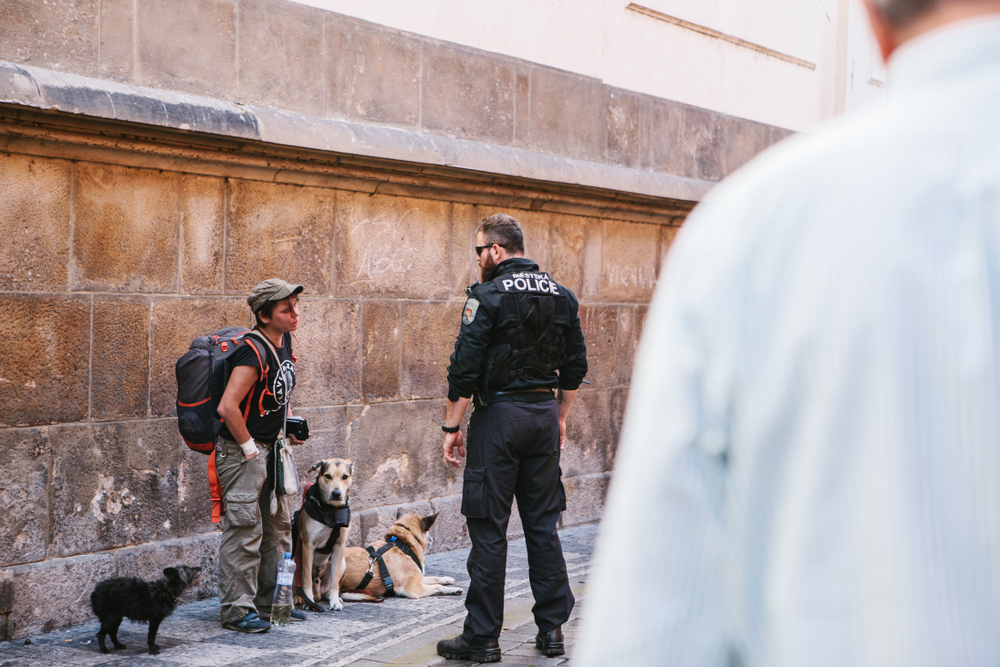![]() Youth homelessness is a tragedy, not a crime. But in cities across the country, homeless youth face civil and even criminal penalties for unavoidable human activities like standing, sitting and sleeping in the very streets where they’re trying to survive.
Youth homelessness is a tragedy, not a crime. But in cities across the country, homeless youth face civil and even criminal penalties for unavoidable human activities like standing, sitting and sleeping in the very streets where they’re trying to survive.
“I always worried, ‘Is today the day the cops are going to get me? Is today the day that someone’s going to take what little I have?’” This is how Zak Franet, a government relations and public affairs professional, describes his struggle with homelessness at 22 years old.
There are well-documented connections between youth homelessness and law enforcement, including quality-of-life enforcement. At Larkin Street Youth Services — San Francisco’s largest provider of youth-specific housing and services — one in four young people reports a history of arrests, starting on average at age 17. This reflects the situation citywide, where one in three homeless youth report some adverse encounter with the justice system before turning 18. In a California statewide survey, three out of four homeless youth reported frequent negative police interactions. More than half had been ticketed for a quality-of-life offense.

Mary Kate Bacalao
Grasping the connections between youth homelessness and quality-of-life enforcement matters for long-term efforts to help young people end their homelessness. Criminalization creates practical barriers to exiting homelessness, spiraling youth into a cycle of citations and fines, debts and arrests, and eventually jail stays that end with a discharge to the streets, where the cycle can repeat more easily each time. The result for many young people is a criminal record that follows them into their adult lives, making jail a likelier destination than career-track employment and “permanent” (unsubsidized) housing that young people can sustain for themselves with earned income.
“Sometimes I was almost happy to go to jail,” Philip Jones remembers of his own experience with homelessness at 21 years old. “I knew I was going to get food. I knew I was going to have a roof over my head. That was home, you know?”
Proponents of quality-of-life enforcement surely don’t intend for jails to function as de facto shelters. But that can be the practical effect in communities — including major cities up and down the West Coast — where anti-homeless laws proliferate and the nation’s highest rates of unsheltered youth homelessness prevail on the streets.
We need services over enforcement
Quality-of-life policing may produce other unintended consequences as well: Encounters with law enforcement may make youth more vulnerable to street-based violence, either directly at the hands of officers or indirectly, when “move along” policing forces youth to relocate from trusted safe spots to unsafe areas.
The sobering reality is that many homeless youth feel preyed upon rather than protected by law enforcement, and they’re running from the police rather than turning to them for help. Of all the homeless young people who reported police contact in the statewide survey, not a single one reported initiating it.
In California communities — where unresolved youth homelessness is a major root cause of chronic adult homelessness — voters must reject the rhetoric and ballot measures that criminalize people for conducting basic human activities in the streets, especially when we don’t yet have the infrastructure to get and keep them housed. Community members and voters should instead support policymaking that prioritizes services over enforcement, housing over unsheltered homelessness and restorative over punitive notions of justice.
Young leaders with lived experience of homelessness — including Zak Franet and others — have already laid the policy groundwork at the local level. In public hearings, they have called for an end to police harassment, putting it near the top of a list of solutions (including a 24-hour drop-in center and mobile mental health services) that would reduce rather than criminalize youth homelessness.
Their advocacy reflects a broader local movement to “decarcerate” young people. Recently, young leaders of color at the Young Women’s Freedom Center saw years of behind-the-scenes organizing result in legislation ordering the closure of Juvenile Hall by 2021. (The center’s executive director, Jessica Nowlan, has called for “radical imagination” to meet community needs with redistributed public resources: It costs San Francisco $374,000 per year to incarcerate a single young person.) And the Youth Commission, where Franet has served as a commissioner, has set goals to reduce incarceration rates in favor of diversion programs like the city’s Young Adult Court, a model based on developmental neuroscience.
These developments, which young people have led or partnered with decisionmakers to lead, are bright spots in an otherwise bleak legal landscape. A year after the Ninth Circuit’s ruling in Martin v. Boise — that it is unconstitutional to punish homeless people for sitting, lying, and sleeping outdoors when no shelter is practically available — West Coast jurisdictions still seem to be leading with anti-homeless enforcement, and without having to consider the policy consequences of putting young people on a collision course with the law.
We can do so much better to help young people leave homelessness permanently behind. Survival is a right, not a crime.
Mary Kate Bacalao is the director of public funding at Larkin Street Youth Services.
